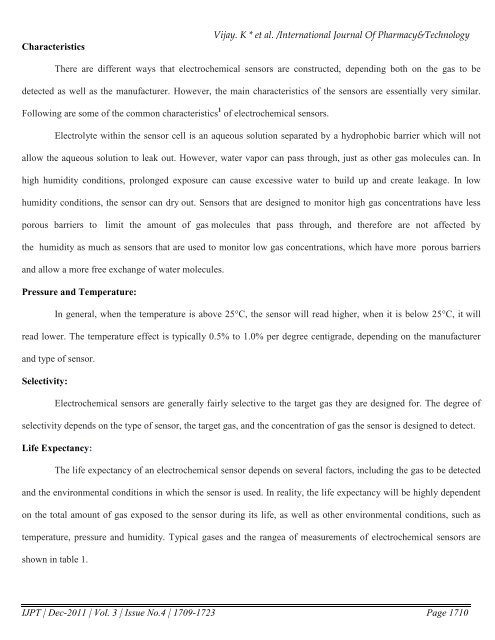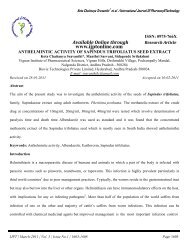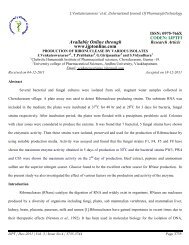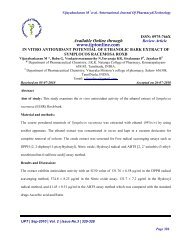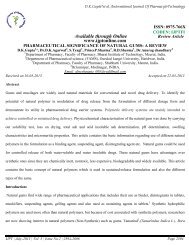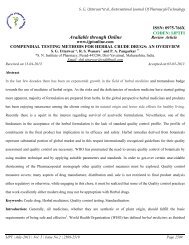ISSN: 0975-766X CODEN: IJPTFI Available through Online Review ...
ISSN: 0975-766X CODEN: IJPTFI Available through Online Review ...
ISSN: 0975-766X CODEN: IJPTFI Available through Online Review ...
- No tags were found...
Create successful ePaper yourself
Turn your PDF publications into a flip-book with our unique Google optimized e-Paper software.
CharacteristicsVijay. K * et al. /International Journal Of Pharmacy&TechnologyThere are different ways that electrochemical sensors are constructed, depending both on the gas to bedetected as well as the manufacturer. However, the main characteristics of the sensors are essentially very similar.Following are some of the common characteristics 1 of electrochemical sensors.Electrolyte within the sensor cell is an aqueous solution separated by a hydrophobic barrier which will notallow the aqueous solution to leak out. However, water vapor can pass <strong>through</strong>, just as other gas molecules can. Inhigh humidity conditions, prolonged exposure can cause excessive water to build up and create leakage. In lowhumidity conditions, the sensor can dry out. Sensors that are designed to monitor high gas concentrations have lessporous barriers to limit the amount of gas molecules that pass <strong>through</strong>, and therefore are not affected bythe humidity as much as sensors that are used to monitor low gas concentrations, which have more porous barriersand allow a more free exchange of water molecules.Pressure and Temperature:In general, when the temperature is above 25°C, the sensor will read higher, when it is below 25°C, it willread lower. The temperature effect is typically 0.5% to 1.0% per degree centigrade, depending on the manufacturerand type of sensor.Selectivity:Electrochemical sensors are generally fairly selective to the target gas they are designed for. The degree ofselectivity depends on the type of sensor, the target gas, and the concentration of gas the sensor is designed to detect.Life Expectancy:The life expectancy of an electrochemical sensor depends on several factors, including the gas to be detectedand the environmental conditions in which the sensor is used. In reality, the life expectancy will be highly dependenton the total amount of gas exposed to the sensor during its life, as well as other environmental conditions, such astemperature, pressure and humidity. Typical gases and the rangea of measurements of electrochemical sensors areshown in table 1.IJPT | Dec-2011 | Vol. 3 | Issue No.4 | 1709-1723 Page 1710


